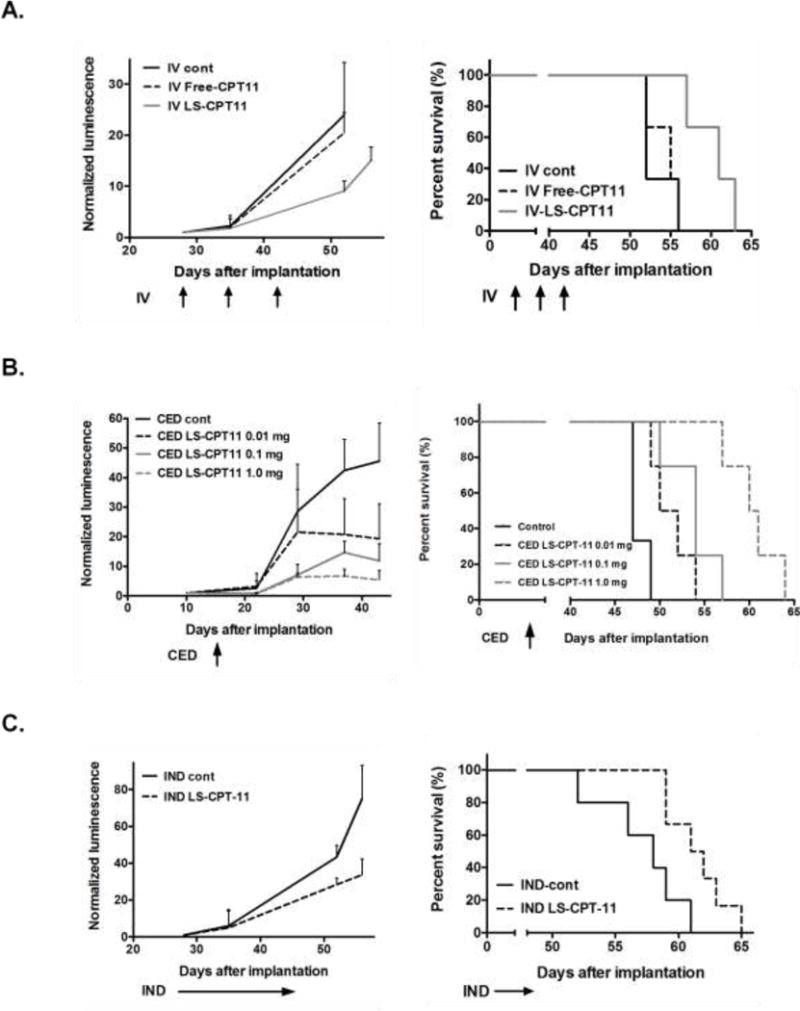Figure 4.

A comparison of survival between animals with brainstem tumors treated by IV, IND and CED routes. A. Rats with brainstem tumor were treated with vehicle (PBS), free-CPT11 or liposomal CPT-11 (LS-CPT11) by IV at daily dose of 30mg/kg once a week for three weeks. Bioluminescence values were normalized against bioluminescence values obtained at the beginning of therapy. Growth curve for brainstem tumor shows more growth delay of rats received IV LS-CPT11 in compared to the animals received vehicle control and free-CPT11 (left). Corresponding survival plots for each treatment (right). Statistical analysis was performed using a log-rank test (IV LS-CPT11: p = 0.0224). B. Rats were treated with LS-CPT11 by CED once at 0, 0.01, 0.1, and 1.0 mg. Growth curve for brainstem tumor shows dose dependent inhibition of the brainstem tumor growth by CED of LS-CPT11 (left). Every dose of LS-CPT11 significantly prolonged animal survival in compared to the animal treated with CED of empty LS (right, 0.01 mg: p = 0.0304, 0.1 mg: p = 0.001, 1.0 mg: p = 0.001). C. Rats received IND of LS-CPT11 at daily dose of 3.25 mg for 15 days as total dose of 48.7 mg. IND of LS-CPT11 inhibits growth of brainstem tumor (left). IND of LS-CPT11 significantly prolonged animal survival in compared to the animals received IND of empty-LS (right, p = 0.022).
